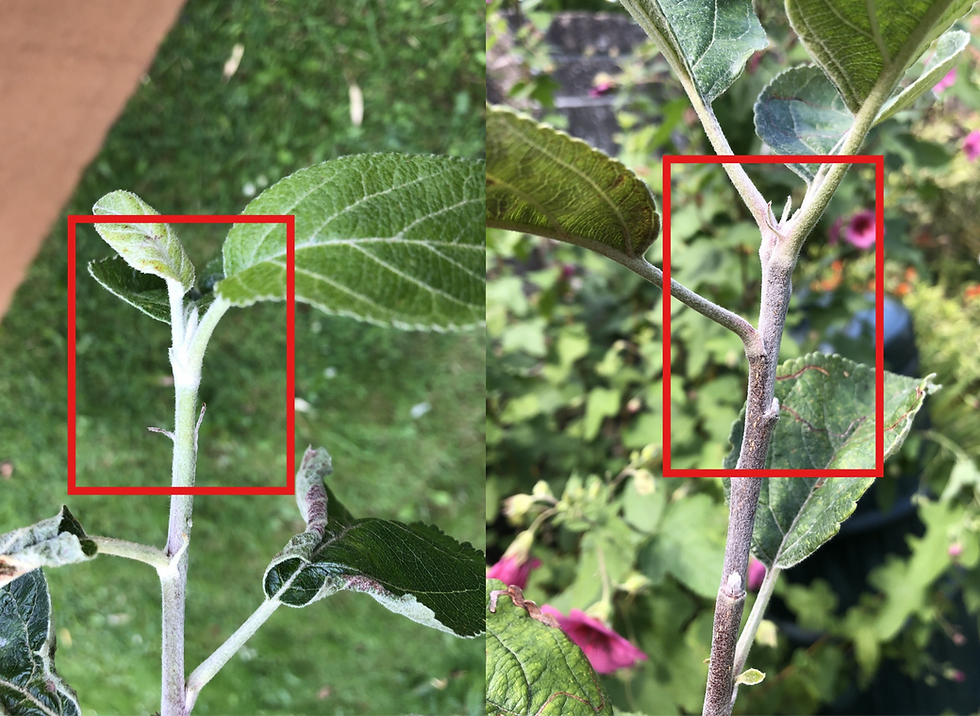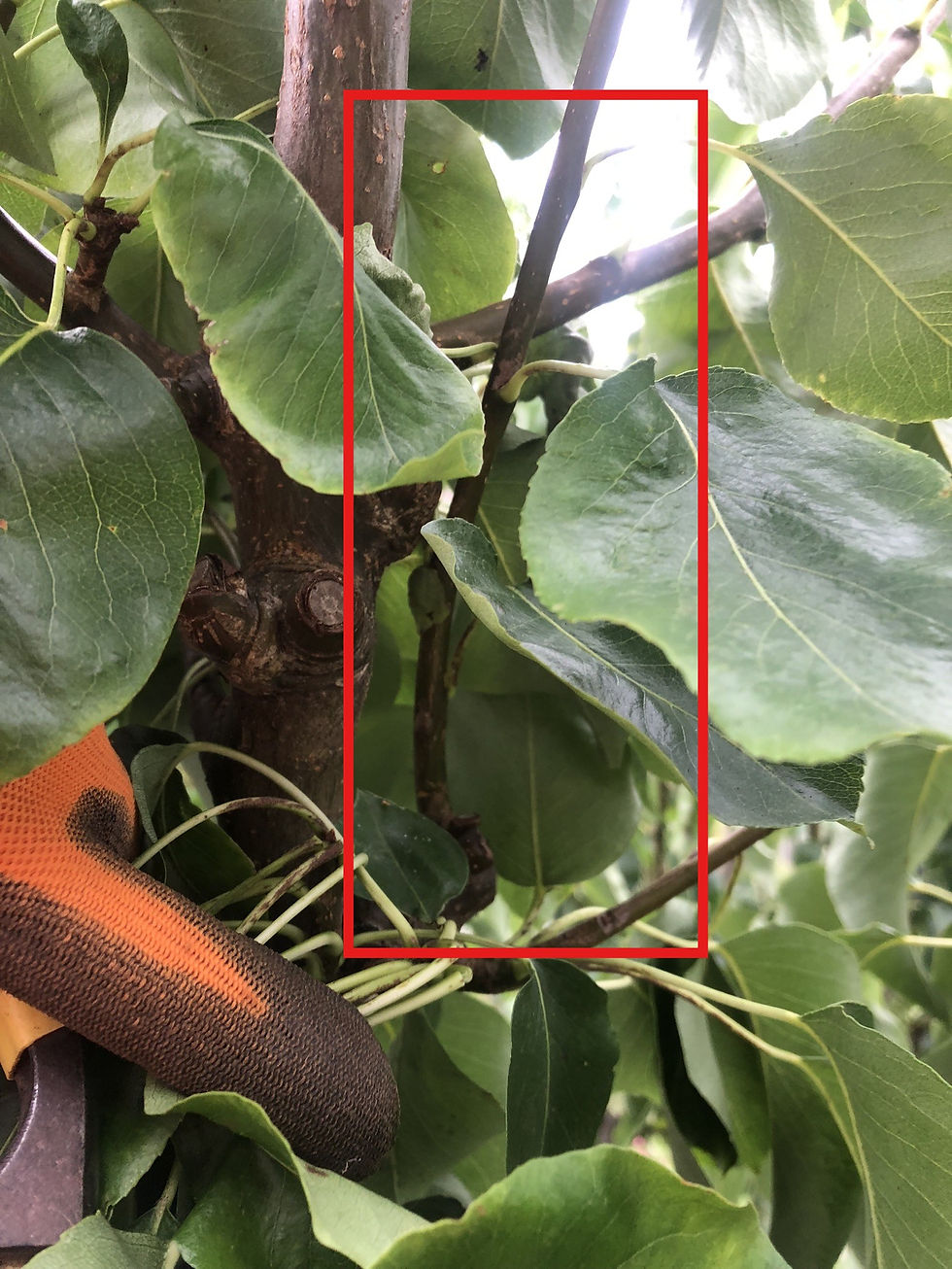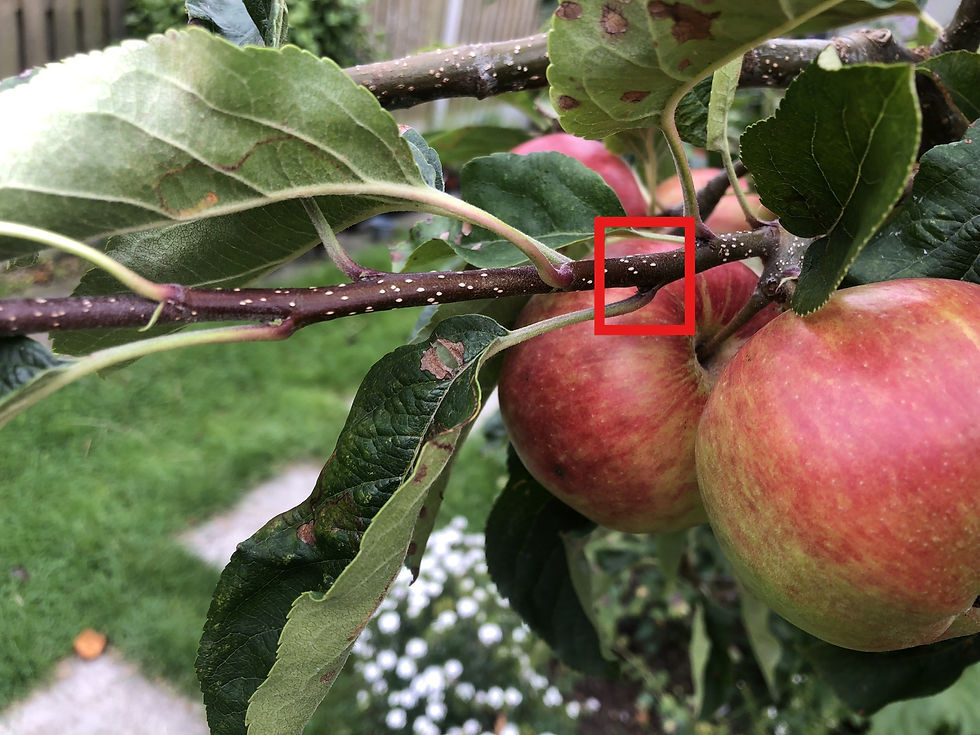Summer pruning of apple and pear trees
- Elaine Staveley
- Aug 4
- 3 min read
Updated: Aug 9
August is here! Time to get your secateurs and tend to your apple or pear tree.

There are two times a year to prune apple and pear trees: summer and winter. Winter pruning forms the structure and summer pruning refines that structure.
Summer pruning is an essential task for keeping the trees healthy, productive, and well-shaped. It:
is only on this year's new growth
increases the sunlight on fruits, which will help them to ripen
helps control the size of the tree which is important if your garden is small
encourages the formation of fruit buds for next year's crop
does not affect the current fruit, since the cuts are made on new growth (which doesn't have any fruit)

Older, woody branches should be left until the tree is dormant in winter. On mature trees that are already well-shaped, summer pruning may not be necessary every year.
Fruit tree pruning can be difficult to understand, so I've simplified it into basic steps and added photos from a pear and an apple tree I recently pruned. The pear tree is still young and produces a lot of vigorous summer growth each summer. The apple tree is more mature.
In Ireland, the ideal time to prune apple and pear trees is usually between late July and mid-August, when around three-quarters of the year’s new growth has matured. This can vary depending on the weather and the specific tree variety.
The best time to prune is when about 3/4 of the new shoots have become woody and firm, changing in colour from bright green to a more mature brown or grey. See photos below.

If you prune too early, the tree will likely respond with a flush of new growth, meaning you'll have to prune again!
If you prune too late, the tree could become vulnerable to frost damage.
There are four main options to pruning new growth:
1. Keep it
2. Remove it
3. Encourage fruiting or
4. Trim shoots with fruit or fruiting spur
Keep it: If the shoot is in a good position and has the potential to develop into a main branch, leave it in place. Over time, it will thicken and grow into a new primary branch. See photo blow.

Remove it: If the new shoot is poorly positioned - such as causing overcrowding or crossing another shoot or branch - prune it cleanly at the base. See photo below.

Encourage fruiting: Cut back new shoots to three leaves above the basal cluster, which is the group of leaves that grow closely together at the base of a new shoot. Or if there is no visible basal cluster, simply cut the shoot back to three leaves the current season’s growth. See photo below.

Trim shoots with fruit or fruiting bud: On shoots with existing fruit or fruiting buds, shorten the shoots to one leaf beyond the fruit (or fruiting bud). If the first leaf is under an inch away from the fruit (or fruiting bud), cut back to the second leaf. See photo below.

Enjoy your summer pruning and if you happen to cut something you later regret, don’t worry! As new growth develops over the next few years, you’ll find ways to correct it.



